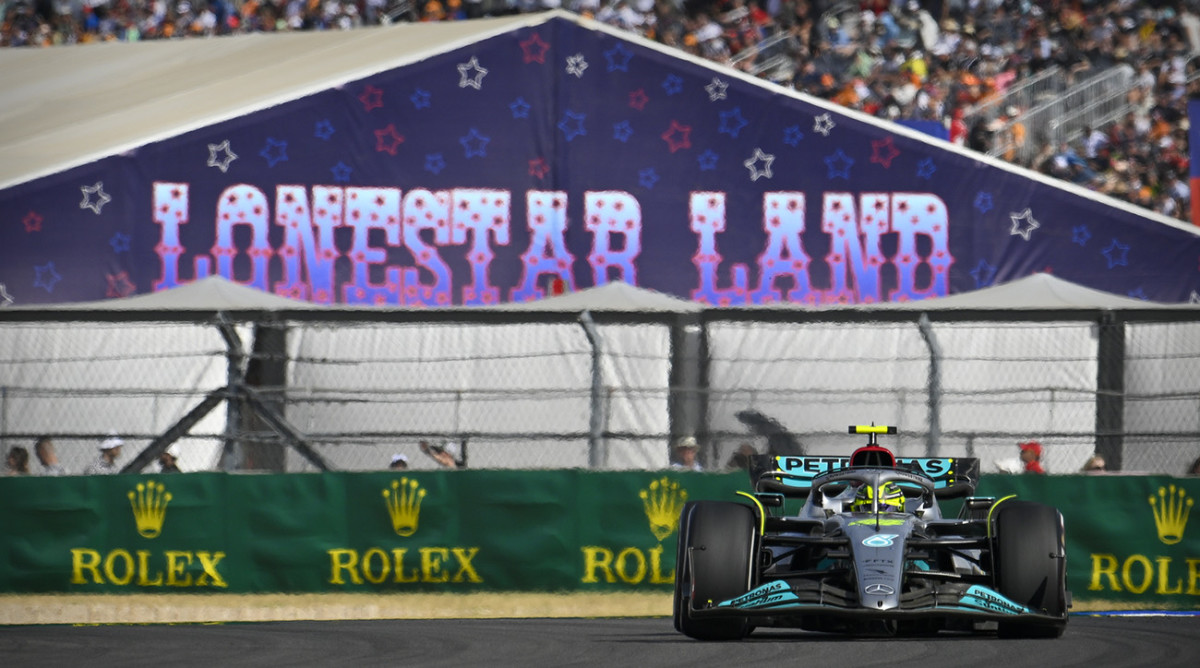The U.S. Has Always Had a Firm Place in Formula One
Formula One returns to America this weekend, ready for its second of three races this year. Although the U.S. is the only country currently on the calendar that has the privilege of hosting three events in a single season, it’s not the first time this has happened. The huge influx of fans (thanks to docuseries like Netflix’s Drive to Survive) has rapidly increased the interest of racing in the States, but F1 has always had a love affair with America.
Austin is this weekend’s base for the F1. Although both the drivers’ and constructors’ championships have been decided with five rounds to go, the hype for this weekend’s race is still very high. Since its introduction on the calendar in 2012, the Circuit of the Americas has provided plenty of fantastic racing action. Its iconic climb up to Turn 1 is one of the most anticipated race starts of the year, and the mix of elevation and variety of turns means it’s one of the drivers’ favorites.
In addition to Austin, Miami made its debut last season with F1 heading back there for a second addition of the race in May earlier this year. However, perhaps the most anticipated racing event of the year comes next month when F1 heads to Las Vegas. The street circuit—which hopes to be one of the fastest on the calendar—is set to be one of the most talked-about sporting spectacles of the year, but it’s not the first time the championship has paid a visit to Vegas.
In fact, F1 and the U.S. have a long history.
Let’s start with Vegas. As we know, F1 and Sin City have got big plans for next month. Millions upon millions have been spent constructing the new circuit and to make the iconic destination ready for a weekend it’ll never forget. But when F1 first raced there in 1981 and ’82, that’s exactly what they wanted everyone to do: Forget about it. The temporary circuit was based in the Caesars Palace parking lot and was such a brutal track design that the drivers’ necks were in agony after completing the race distance. In the desert climate, the heat was seriously hot. After only two years, the race was removed from the calendar. Now, more than 40 years later, F1 will make its return to Vegas, and this time around, organizers are hosting the race in the early-morning hours to avoid any weather-related issues.
Street circuits in America are a popular option, as they can be constructed and deconstructed fairly easily. They’re also relatively accessible to fans, so in the 1970s, ’80s and ’90s, the championship headed to the likes of Detroit, Long Beach, Calif., and Phoenix. With some impressive city landscapes as a background and thousands of people flocking to see the racing action, street circuits have remained a popular option in modern-day F1, with Las Vegas, Saudi Arabia and Baku joining the calendar.
Over a decade ago, there was even talk of a street race around New Jersey with a backdrop of New York City. Four-time champion Sebastian Vettel completed a show run around the suggested circuit configuration and was very complimentary about the idea. But it never ended up becoming a reality for a variety of reasons including finances, and instead, the all-electric Formula E series raced in Brooklyn, starting in 2017.

Before the Circuit of the Americas, F1 raced in Indianapolis. The Indianapolis Motor Speedway, home to the Indy 500, hosted several events in the past, including one of F1’s most controversial races back in 2005. Only six cars lined up on the starting grid for that race, after tire issues for Michelin meant only the Bridgestone runners were able to get the green light to race.
Texas was also home to the 1984 Dallas Grand Prix, but the circuit didn’t last long and was canceled after just one season due to extreme temperatures, crumbling track surfaces and British driver Nigel Mansell’s collapse at the finish, after he tried to push his car over the line.
During 1959 and ’60, events were held at Sebring International Raceway in Florida and Riverside International Raceway in California. Permanent facilities like Watkins Glen in New York have also been home to several U.S. races in the past. The circuit hosted 20 consecutive Grands Prix from 1961 to ’80, showing that the U.S. has always been a firm favorite on the calendar. In fact, in 1982 with Watkins Glen, Long Beach and Detroit all on the calendar, the U.S. became the first country to have three races in a single season. That achievement didn’t happen again until 2020, when the pandemic meant Italy hosted three events at different circuits.
That impressive feat will occur again this season when F1 races in Las Vegas, but history shows that the U.S. has always played a crucial and important role in F1. These latest races are just the next ones in a long line of iconic venues that have played host to the pinnacle of motorsport.
